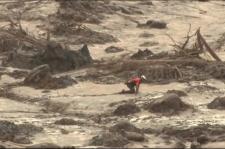
Samarco disaster plays out in different ways for different people
The big boys in the world of finance have launched a class action against Vale, the Brazilian mining champion, in relation to the Samarco mine disaster of 6th November.
Not surprisingly, the action originates in the USA.
It was launched by a firm of corporate litigators called Bronstein, Gewirtz and Grossman and alleges that Vale made false statements and failed to disclose “material adverse facts”.
How many investors in Vale are attracted to the suit remains to be seen.
Alongside Petrobras, Vale is one of the few truly global businesses that Brazil can boast.
And that means that the political will in-country to seek proper restitution for the Samarco disaster might not be as strong as the victims have a right to expect.
But unless they happen to have bought shares in Vale during a specified period of time this year, they will be unable to participate in the Bronstein, Gewirtz and Grossman action.
To be fair though, government agencies are making some noise on behalf of the local people whose village was swept away, and whose families were torn apart by the loss of the dead and the missing.
A US$7 billion lawsuit has been launched by the Brazilian government at the federal level to run alongside a now up-and-running US$3.6 billion suit filed by the State of Minas Gerais.
And Ibama, the Brazilian environment agency, has already slapped a US$66.3 million fine onto the Samarco operating company
Partly, these in-country lawsuits are defensive in nature. Certainly, a key driver behind the Minas Gerais lawsuit is to prevent local taxpayers bearing the burden of paying for the clean-up.
But on that score, things aren’t quite as bad as they might have been. Tests are still ongoing, but the initial assertions by Samarco’s other joint owner, BHPBilliton, that the substance of the spill was not toxic, appear to be holding true.
That won’t help rebuild the 500 homes that have been destroyed, but it does mean that rehabilitation of the surrounding land will be a less protracted affair than it otherwise might have been.
Samarco has now stated its intention to move all of those displaced by the disaster out of temporary accommodation and into secure rented accommodation by February.
Its tests confirm that the tailings sediment is not hazardous to human health, and it’s also of the view that the large number of fish that were killed in the regional river systems after the spill didn’t die due to toxicity, but rather because of “reduced oxygen uptake”, whatever that means.
On that score, tests are ongoing.
But in the meantime, the tailings plume has now reached the Atlantic Ocean and is dispersing. On a long view, the mined sediments will now be restored to what’s known in geology 101 as “the rock cycle”.
On a shorter view, Samarco has developed a programme to monitor the plume in the ocean, to see how it behaves and to monitor just how much of a threat to the ocean environment it becomes.
Back on shore Samarco has made US$100 million available for what it calls the “relief effort” while a further US$260 million has been set aside to cover compensation and clean-up costs.
Whether that will be enough remains to be seen.
And in any case, much of the damage runs beyond any form of financial reckoning. There’s the thirteen killed for a start.
The accountants and lawyers may run the rule over those losses, but there’ll never be an adequate compensation formula for that. And the papers are full of heart-rending individual stories.
And then there’s the wider social costs.
Any local activity that was based on the land or the river system has now been severely disrupted.
But not only that. Several thousand local jobs that were dependent on the mine are now at risk too.
Given the financial liabilities the project has now incurred, not to mention the burden of the repairs and the clean-up operation, a re-start doesn’t look imminent in any way.
Finally, the iron ore price is currently plumbing record lows. Whether Vale and BHPBilliton think it’s actually worth a re-start at Samarco remains to be seen.
The ripple effects of this disaster will be felt for years to come.





